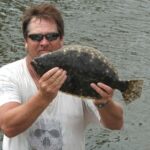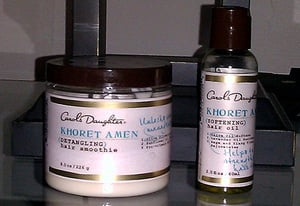Flounder are a very popular fish from Maine to Texas, and they are highly-sought after wherever they occur due to the fish’s great reputation on the table. The two predominant flounders are the summer flounder (also called fluke in the northeast) and the southern flounder.
I have always made my own flounder rigs, and I use extremely simple ones. Although you can buy or make flounder rigs with all kinds of floats, spinners, beads and bangles, flounder are actually a very simple fish in the manner in which they feed. You don’t need all that hardware to catch them, and I have never found that all the frills add to the hits.
One thing commonly “sold” to folks buying flounder rigs with floats on them is that the floats keep the bait up and out of the reach of crabs. While the floats might add some visibility to the bait, they are not really more effective as far as crabs go. Blue crabs can swim, quite well, and still easily get your bait.
Don’t get me wrong, the flounder rigs with all the frills will catch fish. But they are expensive and I don’t think they work any better than very simple rigs. Also, if you like to cast for flounder like I do, as opposed to mainly drifting or trolling, simple rigs will not get tangled in the current.
For flounder fishing, the most important thing is that the rig is sitting on the bottom. Although you will occasionally see flounder taken by folks fishing live bait or lures under a float, 90-plus percent of the flounder taken will be right on the bottom. They don’t usually come up very far to take a bait since they are slow swimmers made to lie camouflaged right on the sea floor.
That’s the other big benefit to simple rigs. If you are correctly fishing for flounder, at least when you are casting, you are going to be around structure and hang up a lot. It is far better to be losing a lot of cheap rigs than a lot of expensive ones you have ordered or bought in a store.
Also, many store-bought flounder rigs use wire for leader material. You should never use these rigs for flounder, as wire cuts down on the bites and you don’t need wire to protect against a flounder’s small teeth. I use plain monofilament as my leader material, usually 30 lb test, but many anglers like more expensive fluorocarbon leaders, and they are even better.
My favorite rigs for flounder are the fixed-sinker rig, the fishfinder rig, and the bucktail flounder-pounder. The easy instructions are detailed below:
Fixed-Sinker rig. The simplest rig for flounder is a fixed-sinker bottom rig. It is about the most simple rig you can use period. I do not like it as much as a fishfinder rig when casting for flounder, but it is fine when drifting, trolling, or fishing from a pier or bridge. Even when casting, a fixed sinker rig works very well.
To make a fixed-sinker rig for flounder you need a cylindrical trolling-style weight. This is just a cigar-shaped sinker with one loops on each end to attach the line. The size of the sinker depends on the conditions you are fishing and how much weight it will take to get to the bottom.
From one loop tie on about 12 inches of 30 lb test monofilament leader (or use whatever test fluorocarbon you prefer). Then just tie on your hook, a 1/0 Kahle-style hook. You attach your running line to the other loop of the sinker. Nothing could be easier. If one loop of the sinker has a swivel attached to it, that is the end you tie your running line to. This rig will not give you quite as much feel for the bait or the bite as a fishfinder rig.
Fishfinder rig. The idea behind a fishfinder rig is to let the weight sit on the bottom while the live bait moves about on its own, reacting to the presence of nearby flounder. This makes the rig perfect for casting live bait. Trolling or drifting the fishfinder rig isn’t any better than a fixed-sinker rig, but when casting it allows you to know exactly what is going on at the terminal end of your rig, since the weight sits on the bottom and you can feel the live bait moving. It is great for feeling flounder bites, since they tend to take the live bait in their mouth and you don’t usually hit them right away.
To make a fishfinder rig you first thread an egg sinker to the line running from the rod and reel. Go with the smallest sinker you can get away with, but remember you have to get the rig down to the bottom. One ounce is common, and you can go heavier in heavy current.
After threading on the egg sinker, tie on a black barrel swivel which serves as the stopper for the egg sinker. To the other free loop of the swivel you tie on about 12 to 14 inches of leader material, 30 lb monofilament (or fluorocarbon).
Then tie on a 1/0 Kahle-style hook.
Bucktail flounder-pounder. This is a more expensive rig to make, and the only one I use that is similar to most store-bought rigs. I really don’t consider it necessary unless the flounder are scarce or not biting well. Then the added flash of the spinner and the texture and color of the bucktail may help you out. Also, if you are fishing in a place that also has gray trout (weakfish) they favor this lure.
First cut about 21 inches of 30 lb monofilament (or fluorocarbon) leader to a 1/0 Kahle-style hook. Then thread on a short bucktail teaser, a small red glass bead, a #4 silver or gold spinner blade, and another small red bead.
Finally, tie the end to a black barrel swivel. You slide an egg sinker onto the running line to make this a snazzy version of the fishfinder rig.
These three simple rigs are all you need for flounder fishing. They work well with live bait or cut strip bait or squid. You can also use them with synthetic cut strips like those sold by Fishbites.
You can find methods for trolling for flounder here, and methods for catching larger flounder around structure here.






